DIY Dry Shampoo For Blonde & Dark Hair: 3 Natural Ways (2024)
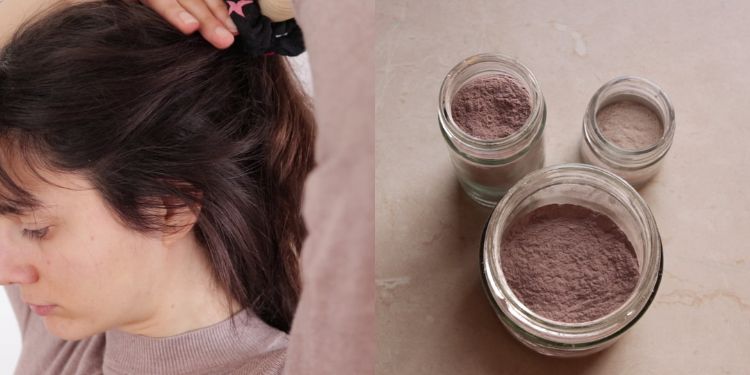
This post and the photos within it may contain affiliate links. If you purchase something through the link, I may receive a commission at no extra charge to you.
How to make DIY dry shampoo at home, and why it’s a good idea?
First, oily hair sucks. But washing your hair too often isn’t just annoying, but also not great for your hair.
Extending the time between washes can be useful if you want healthy, strong hair. DIY dry shampoos can help you with that, and the best part is that they are pretty simple to make.
In this article, I’ll tell you everything you need to know about DIY dry shampoos and 3 easy & natural recipes for any hair color.
We will talk about:
- Ingredients needed
- 3 DIY dry shampoo recipes (for light & dark hair)
- How to apply dry shampoo powder & spray
- Final tips
- FAQ
- Conclusion

Ingredients needed:
Dry shampoos contain either starch or alcohol that absorbs extra oil or grease in the hair.
Store-bought brands often contain toxic ingredients and chemicals that aren’t good for your hair.
There are also better brands using natural ingredients that won’t damage your hair (you can find a quick list in the FAQ section).
However, they are often pricey. Some of these sustainable & healthy dry shampoo brands use rice powder, clay, tapioca starch, fine oatmeal, etc.
We will stick to simple recipes with just a few ingredients that are easily accessible.
Another benefit is that the cost to make the DIY dry shampoos will be very low compared to the conventional ones in the shops or the natural ones.
To DIY zero waste dry shampoo, you will need:
Arrowroot powder:
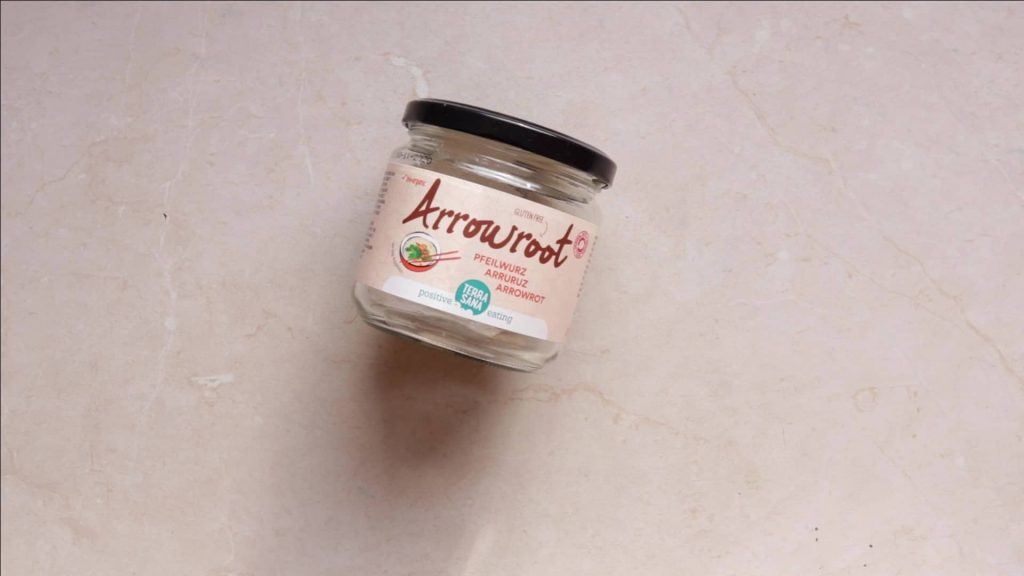
Key features:
- Oil-absorbing properties.
- It can refresh your hair naturally.
- Excellent base option for various DIYs, including DIY dry shampoo.
Alternatives:
While I didn’t try any of the alternatives, some natural dry shampoo products on the market use – cornstarch, rice starch, tapioca starch, and bentonite/kaolin clay.
Bentonite/Kaolin clay:
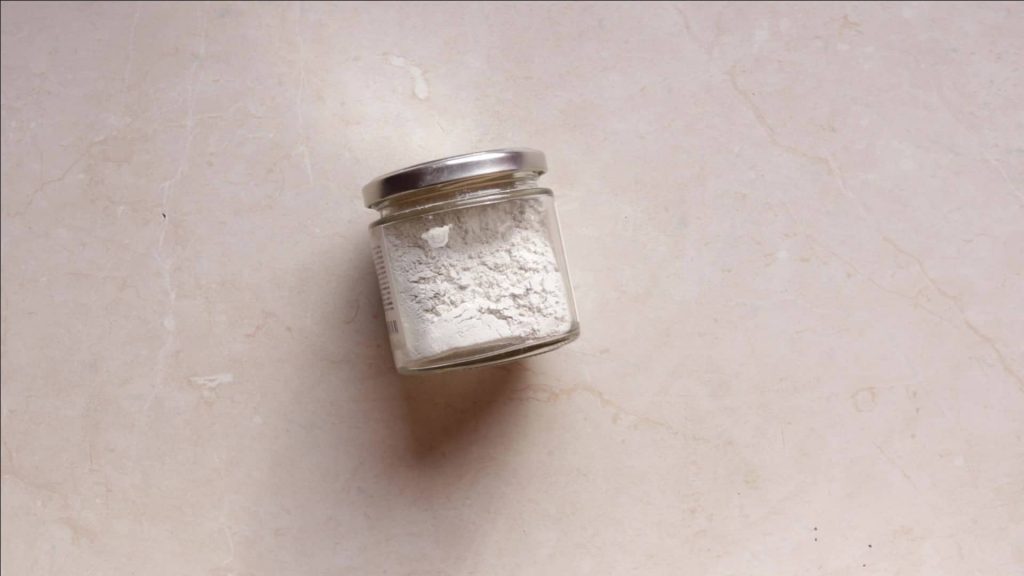
Key features:
- It soaks up the extra sebum as it has highly absorbent properties.
- It prevents the formation of more dandruff.
- Promotes hair growth due to the minerals that contain (sodium, potassium, and calcium).
- Antibacterial.
Natural coloring powders:
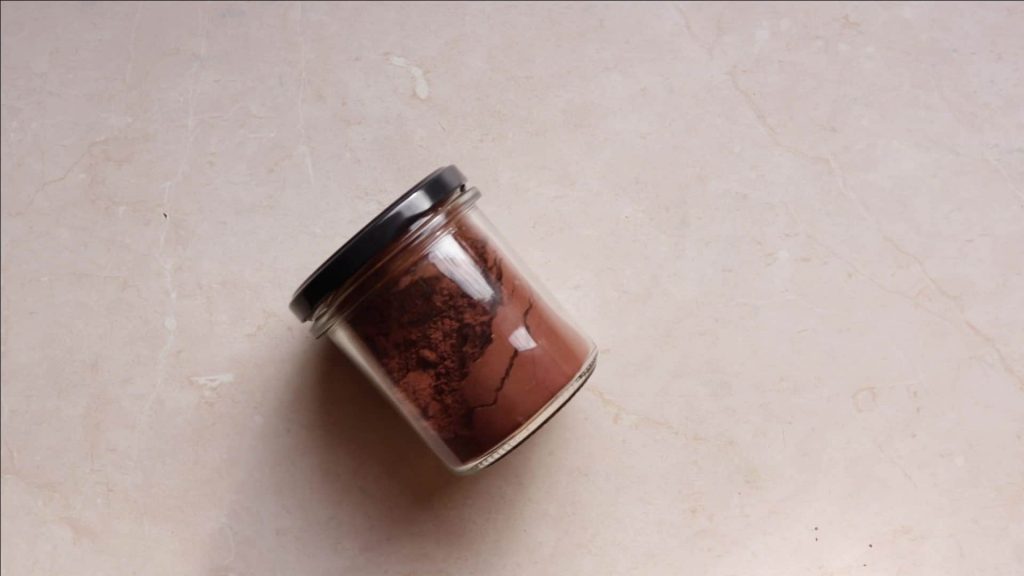
Depending on your hair color, you will need to add some of the following ingredients:
- Cacao powder – For brown hair. The nutrients in cacao promote healthy hair growth. It is rich in magnesium, which may help to combat hair loss.
- Ground cinnamon – For lighter brown & red hair. It prevents a dirty look, stimulates hair growth, and treats hair loss.
- Activated charcoal – For dark brown/black hair. For brown hair – add just a pinch. It has oil-absorbing qualities, and it can effectively remove dandruff and dirt.
- Moroccan red clay – For red hair. Clay absorbs impurities and dirt from the hair.
- Arrowroot, bentonite/kaolin clay – For blonde, gray, or very light hair.
Essential oils:
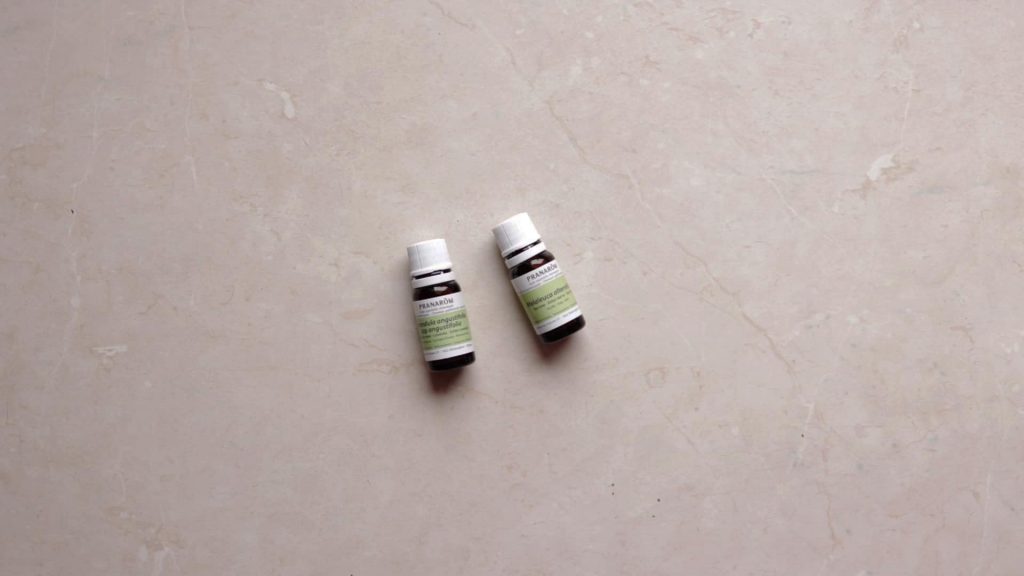
Several scientific studies suggest that certain oils boost hair growth. Some of them are:
- Lavender – Helps balance out moisture levels, antimicrobial and anti-inflammatory. Soothing your scalp and promotes hair growth.
- Tea tree – Effective in treating hair loss and anti-dandruff treatment.
- Peppermint – Effective in treating hair loss.
- Rosemary – Effective for hair-growth treatment and improves hair thickness.
- Bergamot – It reduces inflammation and promotes healthy hair.
- Cedarwood – It promotes hair growth and reduces hair loss by balancing the oil-producing glands in the scalp.
Ethanol alcohol (Vodka):
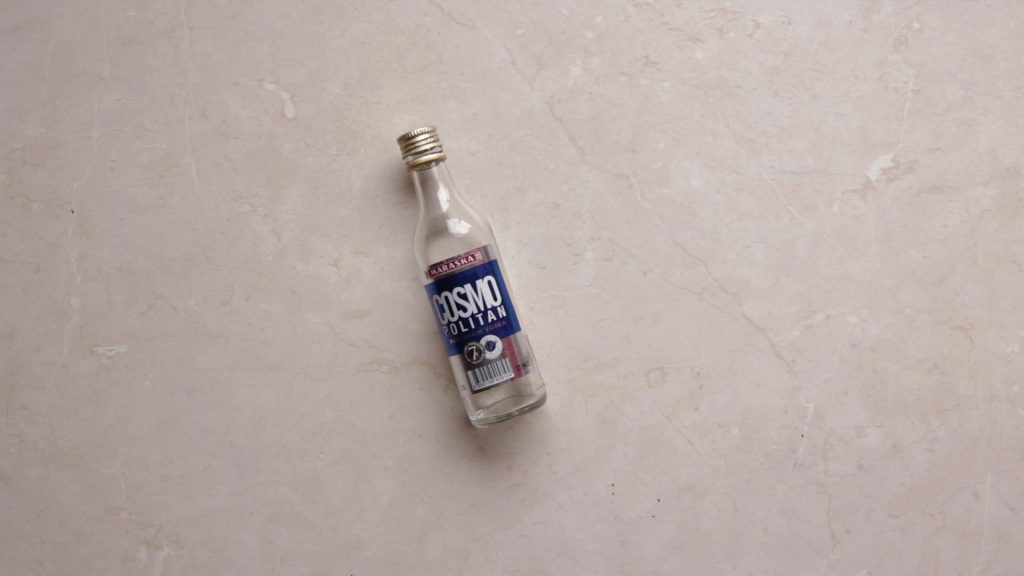
Key features:
- 60% ethanol alcohol effectively kills bacteria and germs.
- Effective and safe at keeping odor away.
- Topically applied on healthy human skin will not cause acute or systemic toxic effects.
Note: It can dry out your scalp if used too often.
Now, let’s jump to the DIY dry shampoo recipes! If you don’t feel like reading, you can watch my step-by-step video guide here:
3 DIY dry shampoo recipes:
1. DIY dry shampoo with arrowroot powder
Ingredients:
- 2 tbsp arrowroot powder (or cornstarch)
- 1 tablespoon kaolin (or bentonite) clay
- 1 – 3 tbsp of natural coloring powder* (depending on your hair color)
*if your hair is blonde, you can simply add a pinch of cinnamon, or don’t add anything.
2. DIY dry shampoo for hair growth
To make a hair growth-promoting dry shampoo, you will simply need to add a few drops of essential oil.
Certain essential oils, such as lavender, aid hair growth by producing more hair follicles.
Ingredients:
- 2 tbsp arrowroot powder or cornstarch
- 1 – 3 tbsp of natural coloring powder (depending on your hair color)
- 1 tbsp kaolin (or bentonite) clay
- 5 drops of lavender essential oil
- 5 drops of tea tree essential oil
No matter which recipe you choose, follow the steps below. It is the same principle for both of the recipes. Also, you can double the amounts if you want to make a bigger batch.
Instructions:
Step 1: Add arrowroot powder (or cornstarch/tapioca starch) to a bowl.
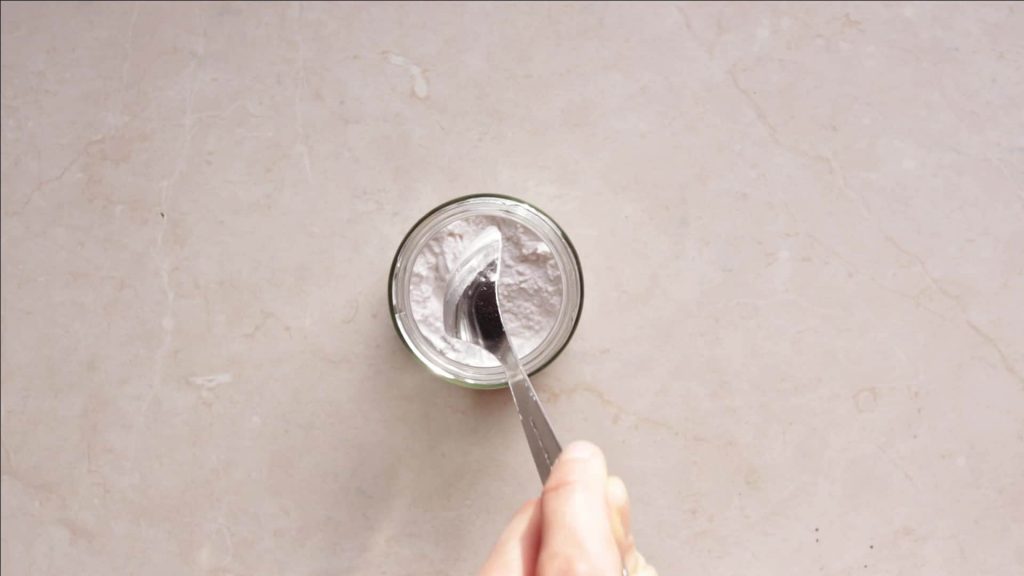
Step 2: Add bentonite (or kaolin) clay.
Note: Use NON-METALIC utensils.

Step 3: Add 1 or 2 tbsp of your preferred natural coloring powder.
- Brown hair – cacao powder. (in my case, I used cacao)
- Lighter brown & red hair – cinnamon.
- Dark brown/black hair – activated charcoal.
- Red hair – Moroccan red clay.
- For blonde – nothing additional, or a pinch of cinnamon.
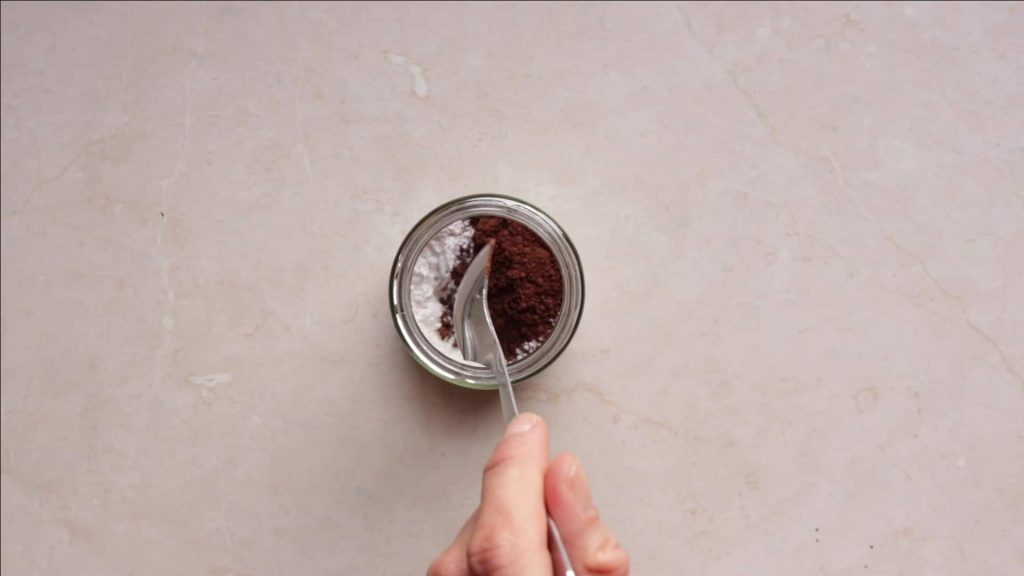
Step 4: In the end, you can add essential oils if you want hair growth-promoting dry shampoo. If not, you can skip this step.
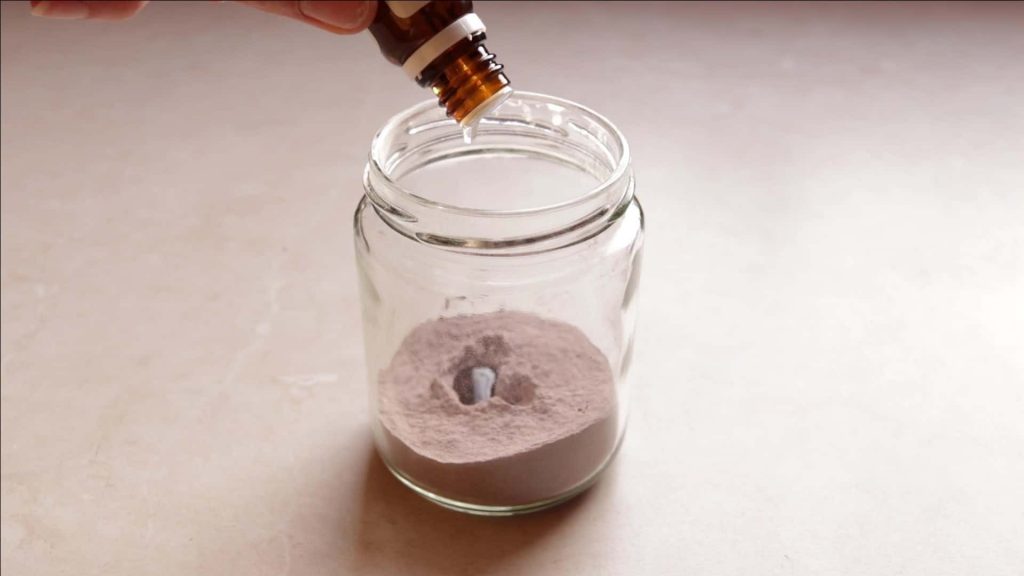
Step 5: Mix well. You can see if you need to add more natural coloring powder.

Step 6: Store in a small jar or salt and pepper shaker.
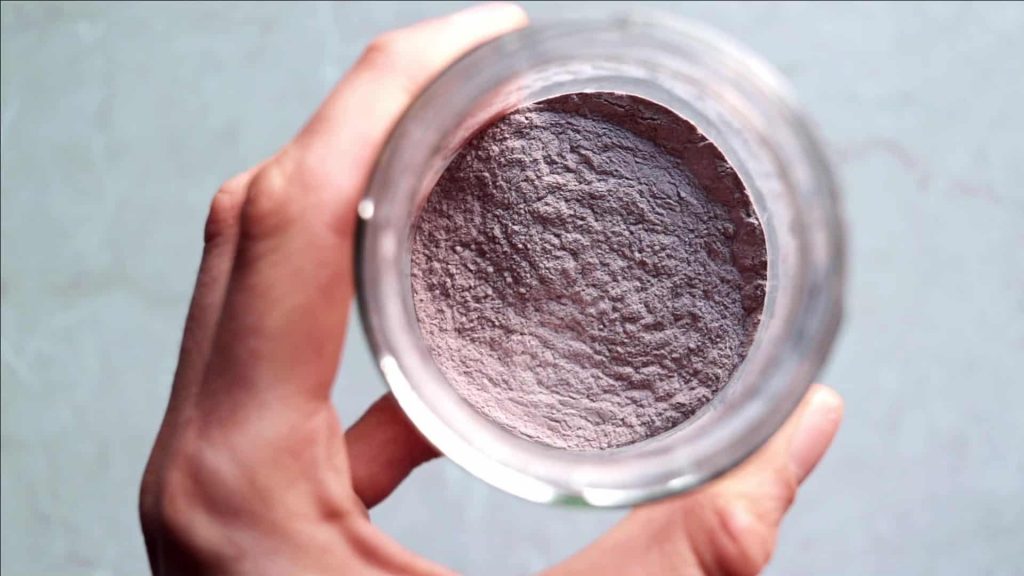
3. DIY dry shampoo spray:
Hair loves moisture, so a dry shampoo spray can be a great option, too. To make it, you will need:
Ingredients:
- 3 tbsp of arrowroot powder
- 3 tbsp of vodka (80-120 proof)
- 10-15 drops of essential oil
- Fill up with water (about 2/3 cup or ~150ml)
- + A spray bottle
Instructions:
Step 1: Add 3 tbsp arrowroot powder to a bowl/glass.
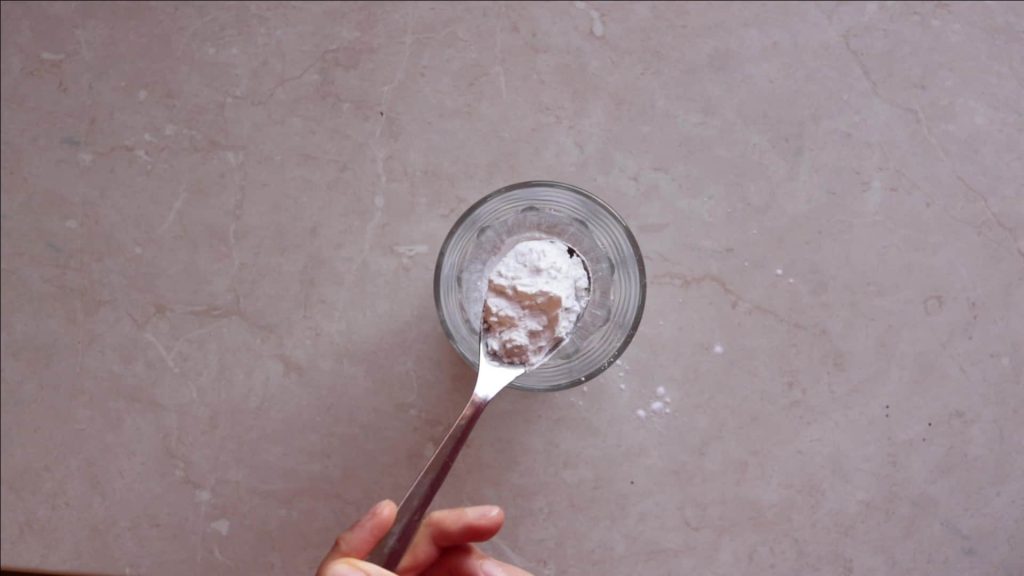
Step 2: Then add 3 tbsp of vodka.
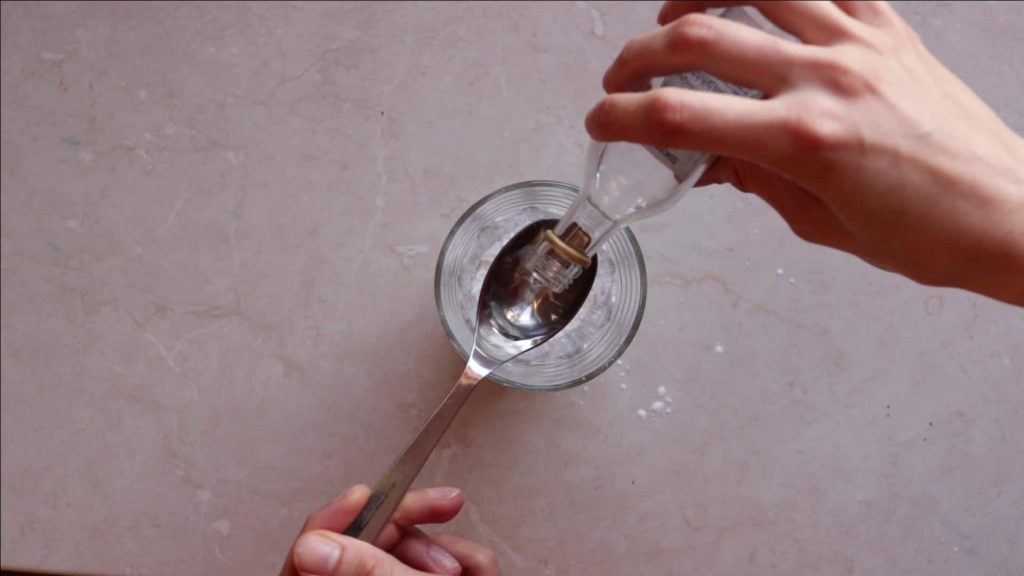
Step 3: Add 2/3 cup of water (~150ml or so).
Note: Since my spray bottle was small, I added less water. So, if your final mixture looks thinner and more liquid than mine on the picture below – don’t worry; it is supposed to be like that.
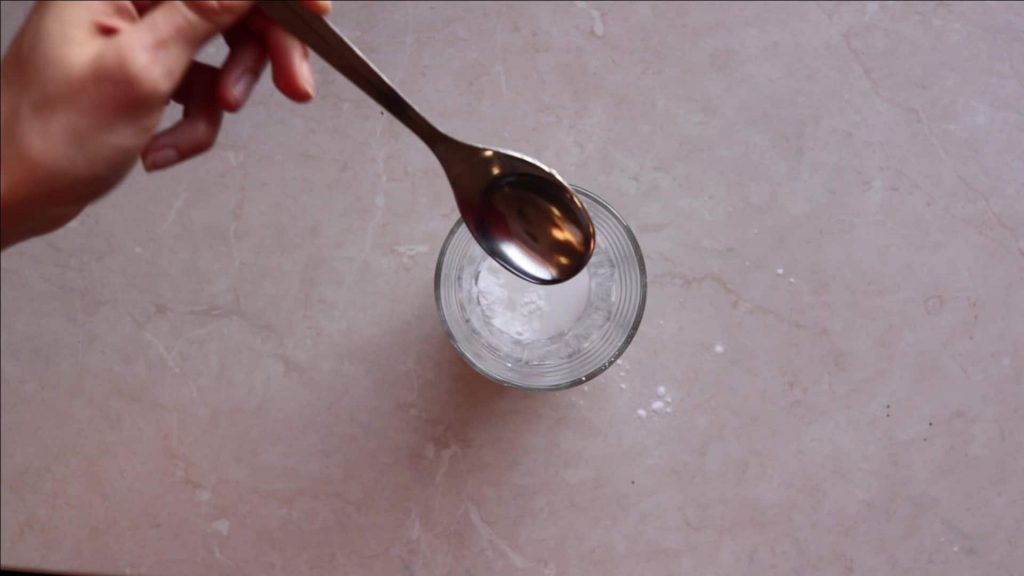
Step 4: Add a couple of drops of essential oil.
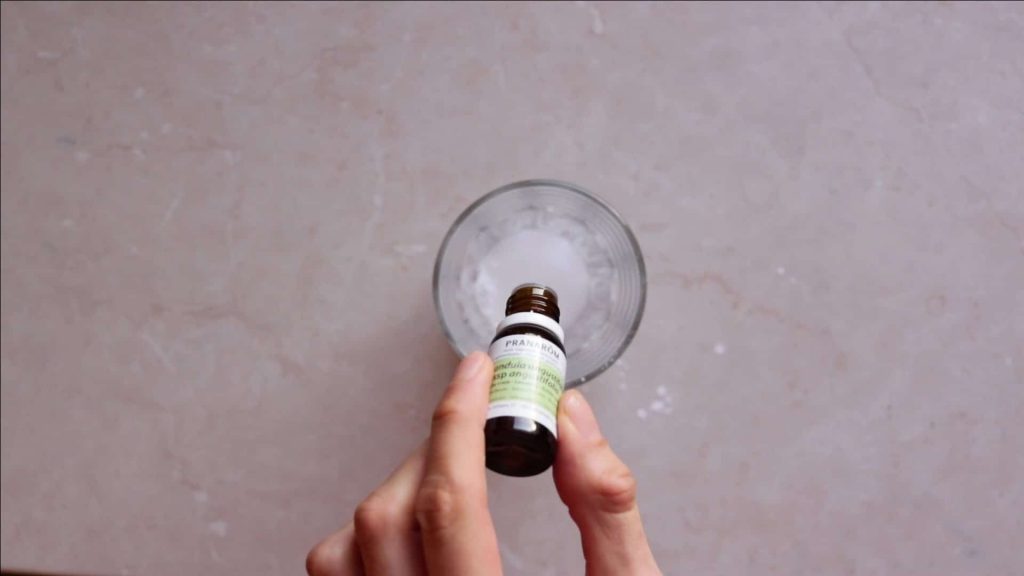
Step 5: Mix all the ingredients.
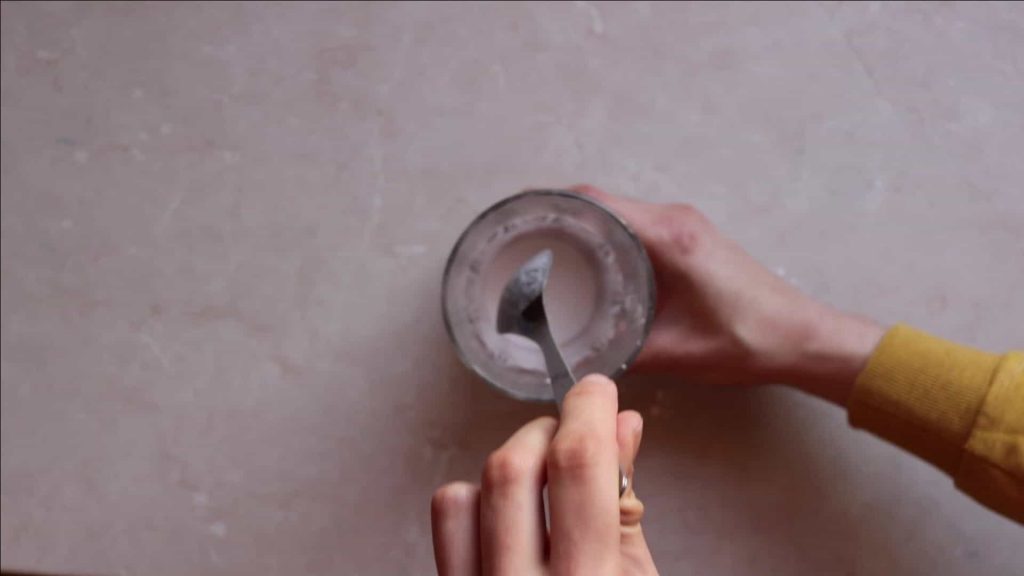
Step 6: Transfer to a spray bottle.
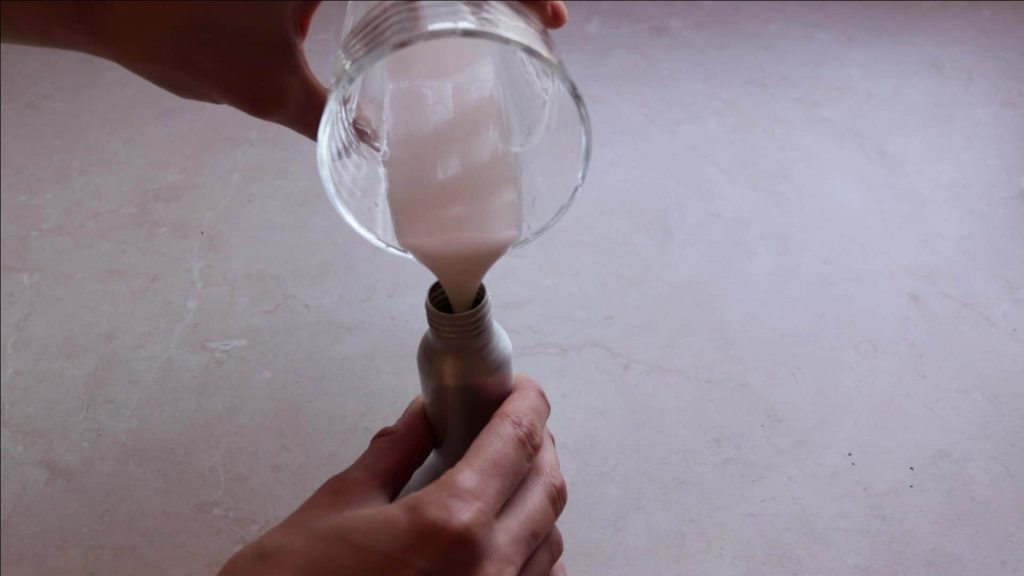
Step 7: Before each use, shake the bottle.
How to apply dry shampoo powder (or spray):
To apply the dry shampoo powder, use a salt and pepper shaker, a make-up brush, or clean hands. I usually use my fingers, but you can use a hair brush, too. Make sure to do it above your sink, as some of the powder flies around, and it can create a bit of a mess.
Step 1: Divide hair into sections.
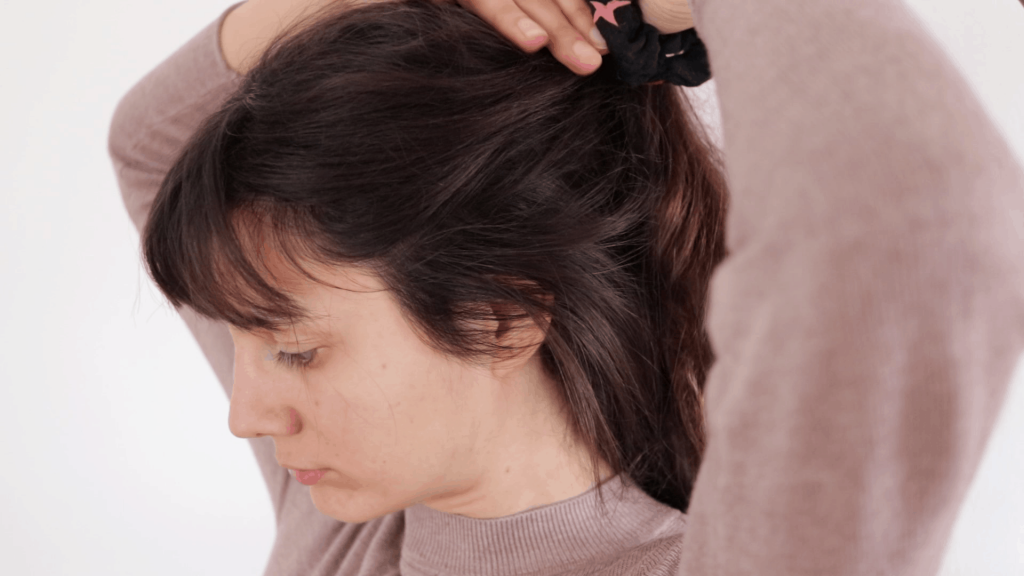
Step 2: Identify oily parts of your hair.
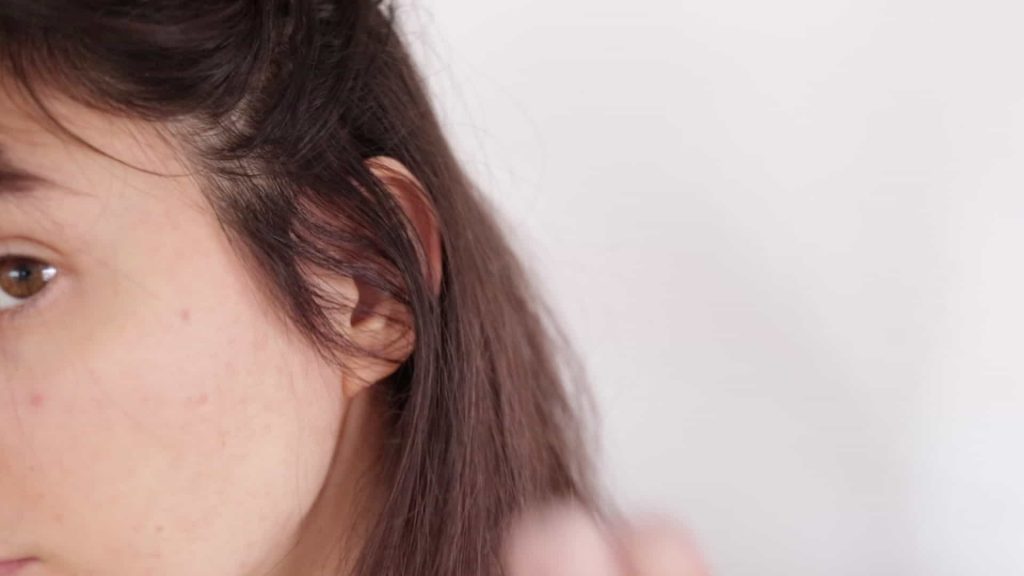
Step 3: Dip your index and middle finger (or a makeup brush) into the dry shampoo container. If you grabbed too much, shake to remove any excess powder.
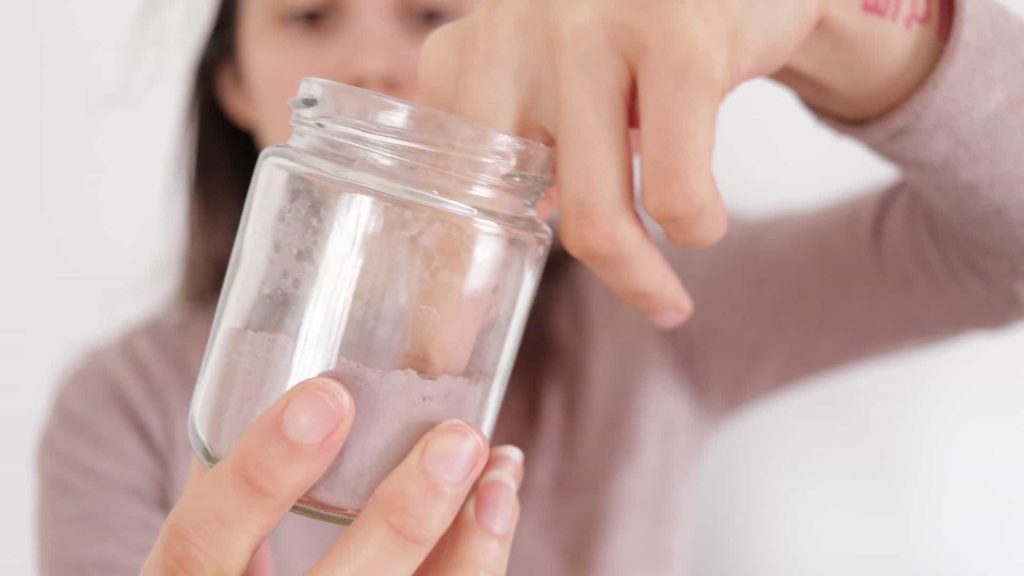
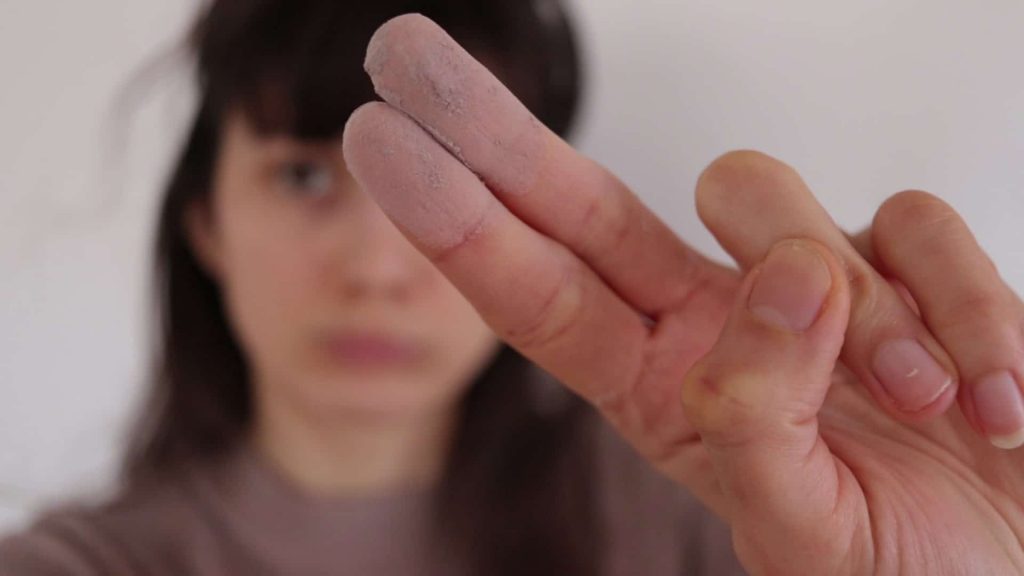
Step 4: Apply the dry shampoo by brushing and tapping the powder into your roots. If you use the last recipe, then spray each part a couple of times. Make sure you go over each area that looks oily.
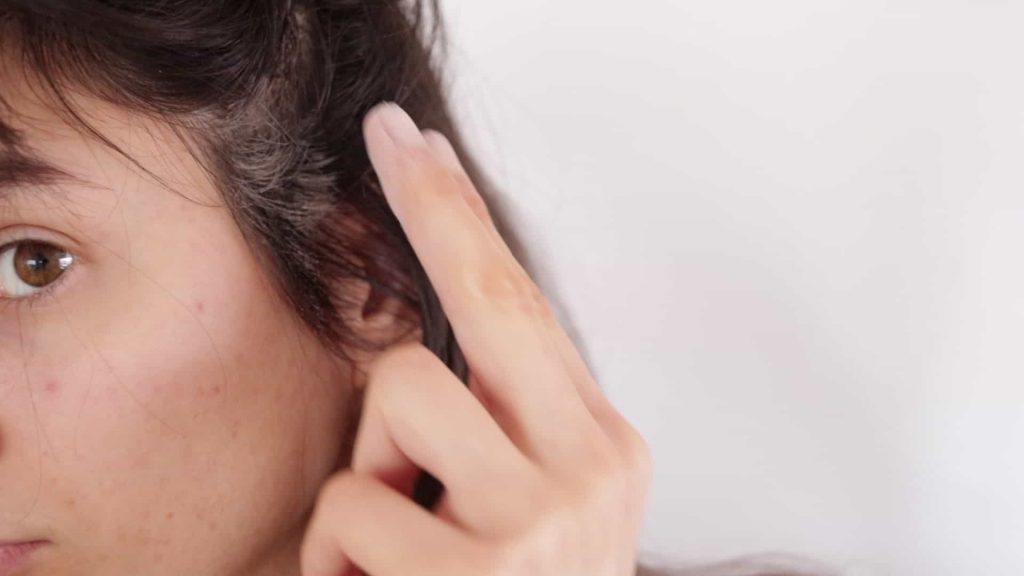

Step 5: Massage it into your roots. This will help to distribute the mixture and allow it to soak up oils. Let the powder (or the spray) soak up the oils for a few minutes.

Step 6: Brush your hair, and add more if you miss oily spots.
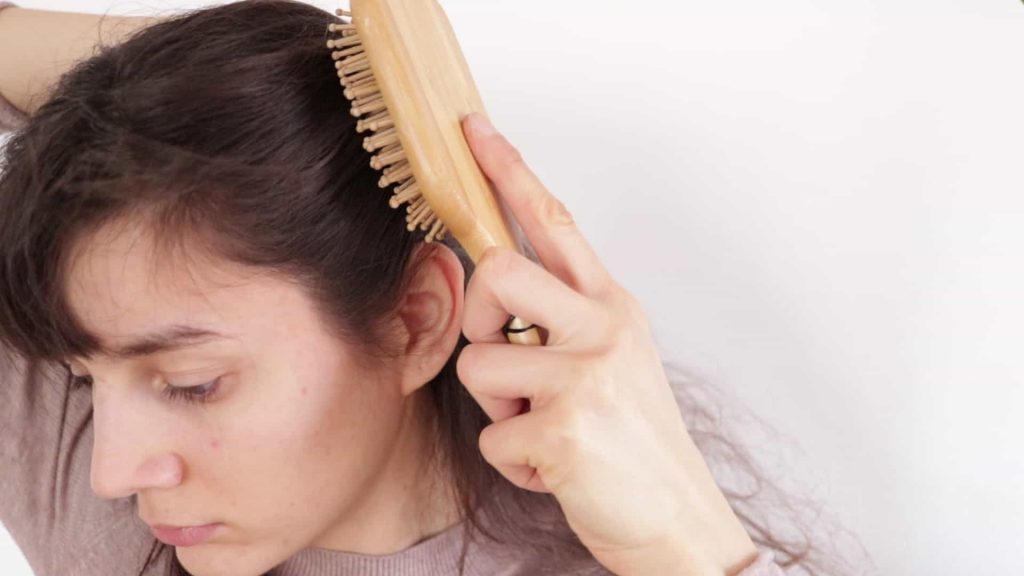
Step 7: After a couple of minutes, you can style your hair as usual.
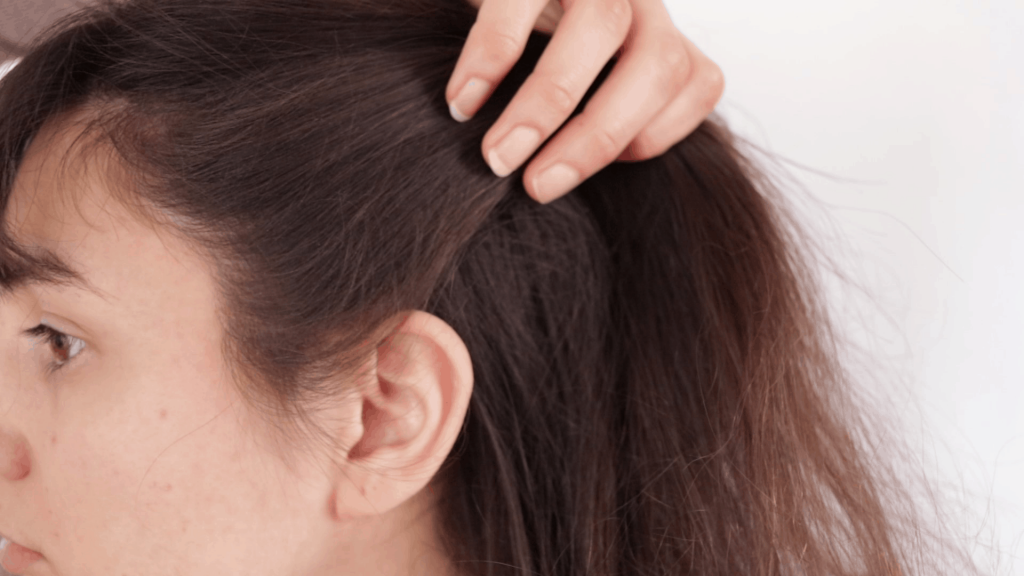
Before & after:

Final tips
Experiment with the colors:
Depending on your hair color, you can experiment to find the best color match. For instance, if your hair is blonde but your roots are a bit darker, adding a pinch of cocoa can work perfectly. Or, if your hair is gray, a little bit of bentonite clay can help. Just don’t be afraid to experiment. 🙂
Patch test:
To avoid rashes or unwanted side effects, do a patch test before using the DIY dry shampoo. Apply a small amount of the mixture to your inner arm and leave for 24 hours. You are good to go if there isn’t any unpleasant side effect, such as a rash.
Add moderate amount:
Overusing dry shampoo can make it harder to spread around your hair and worsen the situation. Sprinkle a bit, and gradually add more, if necessary. If you apply too much by mistake, brush the powder through your hair.
Essential oils:
Ensure you use high-quality, natural, therapeutic-grade essential oils that are safe on the skin.

FAQ:
How does dry shampoo work?
Dry shampoo absorbs the extra oil in your hair with the help of starch or alcohol, leaving your hair to look cleaner, fluffier, and fresh without shampooing.
Dry shampoo doesn’t clean your hair and isn’t a substitute for washing it. It usually comes in a spray or powder form.
Who can use dry shampoo?
Dry shampoos are for anyone – women, men, women, and children. It is also suitable for any type of hair – thick, thin, oily, or normal.
Is dry shampoo bad for hair?
Even though DIY dry shampoos are natural and better than commercial dry shampoos, excessive use isn’t recommended.
Overusing dry shampoo (especially commercial ones) can clog your hair follicles and dry your hair, making it more vulnerable to breakage.
How often can I use dry shampoo?
Dry shampoo can help if you’re trying to reduce the overwashing of your hair. However, it is merely to extend the time between washes.
In the beginning, you can use it up to 2 times a week, but not more than that. With time, you can reduce it to once a week and then 1-2 times every few weeks.
Is cocoa powder good for your hair?
While there isn’t any science behind it, many people report positive results when applying cacao powder to the hair.
It may be because cacao powder contains a high level of antioxidants, helping the scalp grow stronger and healthier hair.
Cacao’s nutrients are magnesium and zinc, which fight hair loss, and calcium, promoting healthy hair growth.
Using cocoa powder in your hair can add shine and volume and brings out dark tones in your hair.
Can baking soda damage your hair?
Some DIY dry shampoo recipes use baking soda instead of arrowroot powder. In fact, the first DIY dry shampoo I made was with baking soda.
While I was satisfied with how it worked, I discovered that extended and intensive use of baking soda could damage your hair.
This is because the scalp has a pH* level of 5.5, and the hair shaft has a pH level of 3.67. (1) Baking soda (sodium bentonite) has a pH level of 9.
A study found that products with a pH higher than 5.5 may increase friction, cause frizz, hair breakage, and enhance hair tangling.
Ingredients with a high pH effectively remove buildup and dry the scalp if it’s too oily. However, long-term use can also strip your hair of its natural oils and irritate the scalp.
Maintaining a 3.67 – 5.5 balance helps with hair health.
*pH (hydrogen) – the measurement of how acidic or alkaline a substance is. It is judged on a scale between 0 and 14. Anything between 0 and 6.9 is acidic, 7 is neutral, and anything between 7.1 and 14 is alkaline.
Can you use baking soda as a dry shampoo?
Yes, you can, but I wouldn’t recommend long-term, intensive use. While there are some excellent aspects of baking soda, the ingredient also has a few negative points.
Baking soda helps remove buildup from commercial shampoo and conditioners. It is also good for absorbing oils and odor.
However, baking soda has a higher pH level than your scalp. This can cause frizz, hair breakage, and hair tangling.
The first dry shampoo I made was with baking soda and cocoa powder. I was extremely satisfied with it, and I loved how simple yet effective it was.
I wasn’t using it weekly, but maybe once every few weeks. If you don’t have any other ingredients and need dry shampoo ASAP, you can use baking soda (and cocoa if your hair is darker).
However, I would recommend using a baking soda alternative for a long-term solution. Bentonite/kaolin clay, arrowroot powder, and cornstarch are good baking soda alternatives.
What are the healthiest dry shampoo products?
If you aren’t into DIYs, you don’t have the ingredients or the time to make it; there are still a few options. You can get a sustainable, zero waste & healthy dry shampoo product.
They all use natural (and some organic) ingredients. Also, keep in mind that some of these products might be pricey. Here are a few healthy, natural, and organic dry shampoo brands:
- Lulu Organics – available worldwide (link to Amazon)
- Drop Dead Gorgeous Dry Shampoo (available worldwide)
- Fat and The Moon
- Beauty by Earth
- Hair Dance Dry Shampoo
- ‘Barnet’ Dark Hair Dry Shampoo
- FeGoo Dry Shampoo
- Lovett Sundries Dry Shampoo
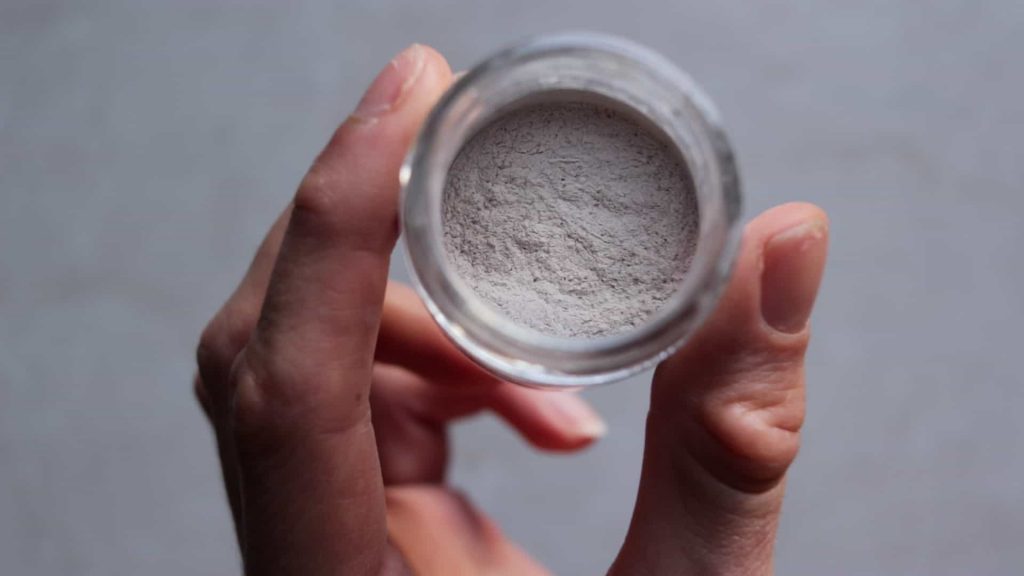
Conclusion
There you have it – a step-by-step guide for 3 simple DIY dry shampoo recipes for any hair color, plus a few additional tips.
To sum it all up:
- Dry shampoos contain either starch or alcohol that absorb extra oil or grease in the hair.
- Store-bought brands often contain toxic ingredients and chemicals that aren’t good for your hair.
- To make dry shampoo at home, the main things you will need are arrowroot (starch), alcohol (like vodka), and a few additional ingredients (essential oils, natural coloring powders, etc.).
- The dry shampoo can work for any hair color.
- You should use dry shampoo up to 2 times a week.
- If you don’t have the time or will to DIY dry shampoo, you can purchase natural & zero waste products (but they will be more expensive).
If you have any questions, feel free to leave a comment below!
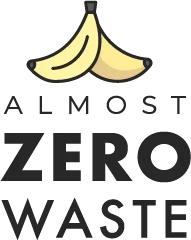
Too many people don’t know that fast hair growth shampoos (of course with no sulfates, no parabens and no DEA) even exist. We can now attain longer hair and enjoy more alternatives. Surely worth exploring.
If you’re going over hair loss, hair damage, preventing skin disorders, hair growth, hair health normally, similar rules actualize.
In general, you want to stay away from hair products and treatments that use chemicals like parabens, DEA or sulfates.
What’s healthy for your hair is beneficial for your skin all the same.
It goes without saying the content above is so useful for so many reasons. It stays away from the common pitfalls and traps too many fall into: using bad alternatives. Greatly appreciated!
Thank you so much for all you are doing! It is so useful and awesome! I shared your blog with someone of my friends.
Hi Mags, thank you so much, I’m glad that you find the blog useful. 🙂